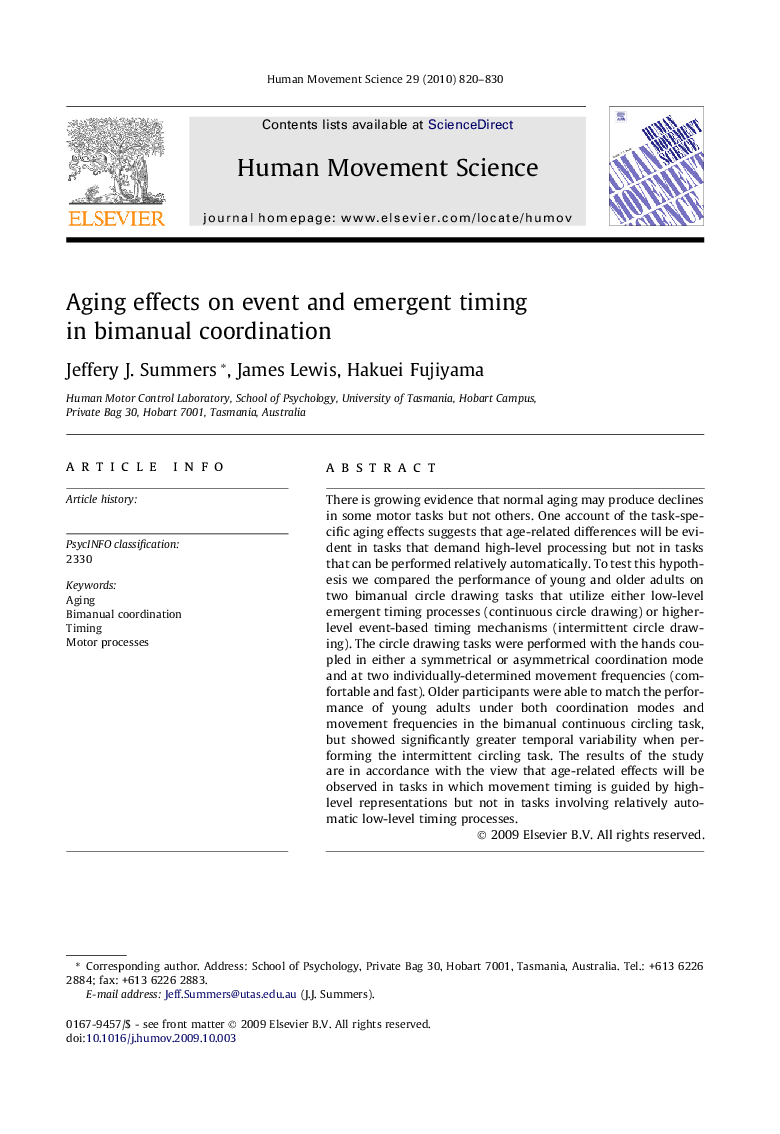| Article ID | Journal | Published Year | Pages | File Type |
|---|---|---|---|---|
| 928717 | Human Movement Science | 2010 | 11 Pages |
There is growing evidence that normal aging may produce declines in some motor tasks but not others. One account of the task-specific aging effects suggests that age-related differences will be evident in tasks that demand high-level processing but not in tasks that can be performed relatively automatically. To test this hypothesis we compared the performance of young and older adults on two bimanual circle drawing tasks that utilize either low-level emergent timing processes (continuous circle drawing) or higher-level event-based timing mechanisms (intermittent circle drawing). The circle drawing tasks were performed with the hands coupled in either a symmetrical or asymmetrical coordination mode and at two individually-determined movement frequencies (comfortable and fast). Older participants were able to match the performance of young adults under both coordination modes and movement frequencies in the bimanual continuous circling task, but showed significantly greater temporal variability when performing the intermittent circling task. The results of the study are in accordance with the view that age-related effects will be observed in tasks in which movement timing is guided by high-level representations but not in tasks involving relatively automatic low-level timing processes.
